We have a few fun freebies this month to promote our Emotion's Package, The Ultimate Classroom & Behaviour Management Package, and Learning Goals & Success Criteria Posters.
Emotions Package
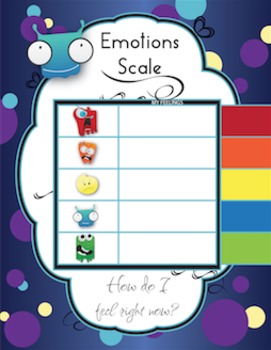
This is a cute, fun, 1 month (20 school days) program (30 - 45 minutes per day) that helps teach children how to understand their emotions and to make better choices. It uses the fun Little Monster's crew to implement a series of fun activities from a make your own monster art project to word searches, mazes, and more. It incorporates fun journaling and drama activities to help students become familiar with what triggers them, how this makes them feel, actions they can take to get away from the situation, and how to consistently make better choices and monitor their feelings.
This package extends beyond the 20 days, as you will continue to use the Emotions Scale and Feelings Journals for the rest of the year. The Mind Maps will also serve as a reference throughout the year. You might want to revisit the Mind Maps in the future and evaluate with your students how well their plans are working and if they would like to make any amendments.
FREEBIE from the Emotion's Package:
Flash Me Your Feelings
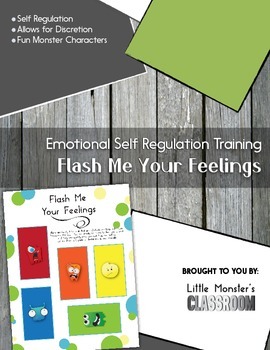
These handy little cards can be cut out, pasted on Bristol board, and laminated. Students keep them with them and every once in awhile, educators can simply ask them to flash them a card. The student will choose the card that matches their feelings. This is great for allowing educators to be aware of potential issues.
WHAT DO THE CARDS MEAN?
RED - I’m angry and losing control
ORANGE - I’m upset about something
YELLOW - I’m sad or frustrated
BLUE - I’m confused, bored, or indifferent
GREEN - I’m happy
The Ultimate Classroom & Behaviour Management Package
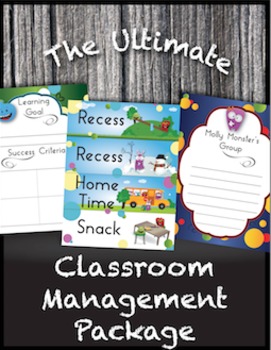 This classroom and behaviour management package will supply you with the
resources to set up your entire classroom to prepare your students for
success. This package contains resources for individual student use and
whole class use. All of our packages contain differentiated versions
of each assignment to cater to all of your students' abilities.
This classroom and behaviour management package will supply you with the
resources to set up your entire classroom to prepare your students for
success. This package contains resources for individual student use and
whole class use. All of our packages contain differentiated versions
of each assignment to cater to all of your students' abilities.WHAT'S INCLUDED:
(Please click on the links for further details)
- Day Plan / Visual Schedule / First - Then Chart
- Awards & Certificates
(awards for positive reinforcement, certificates of success, Kindergarten graduation diplomas)
- Groups & Stations
- Learning Goals & Success Criteria Posters
- Name Cards & Sign In Cards
- Special Helper Chart, Cards, & Calendar
- Sticker Charts
(daily & weekly charts)
- Voice Level Poster
- Washroom / Drink Sign Out
FREEBIE from The Ultimate Classroom & Behaviour Management Package
Name Cards & Sign In Sheets
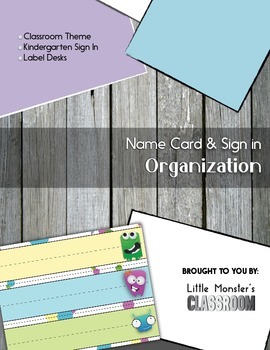
These Little Monster themed name cards and sign in sheets an be used for Kindergarten sign in, to label seats and desks, and to label cubbies for coats and backpacks. These are also great for taping to desks when supply teachers enter your classroom, so they can easily call on students without already knowing their names.
They include single line options for when students are just learning to write their names and the differentiated double lined version for when students are writing their first and last names. The double version also gives the teacher the opportunity to write the student's name on the first line and the student writes their name on the second line.
Learning Goals & Success Criteria Posters
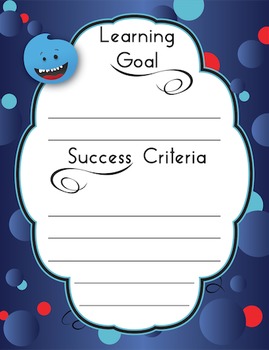
Have your students be a part of the learning process by visually posting their learning goals in the classroom and having them brainstorm success criteria with you.
All of our resources feature the cute Little Monster theme. These adorable little characters make learning fun.
We suggest using our posters for:
-Ongoing assignments such as journal writing (so students can review on a daily basis)
-Large assignments to help students self assess along the way (it's effective to describe their learning in incremental steps)
-Covering the duration of an instructional period, so they know what they are expected to be able to do by the end
-Use where students need a clear understanding of what they are learning (these posters are great for clearing up confusion about what students are learning; the goal is to co-create clear and precise examples of what students are learning)
-Self-assessment (checklists are great for this)
Learn step-by-step how to create learning goals and success criteria.
FREEBIE from the Learning Goals & Success Criteria Posters.
Learning Goals & Success Criteria Graphic Organizer
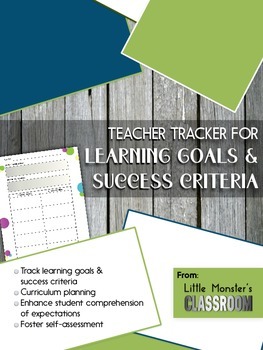
This useful learning goals and success criteria graphic organizer helps teachers to organize the curriculum guidelines and break them down into meaningful learning goals that can be further broken down into success criteria (co-create with students).
Have a fantastic week of teaching. Our students are currently enjoying their March Break and our awesome teachers are hopefully taking a much deserved break, but let's be honest, they're probably working.
Other Things This Teacher is Working On
Blog - Practical Parenting Guidelines for Managing Challenging Behaviours
Blog - The Life of a Supply Teacher - Classroom Management, Activities, & Resources


